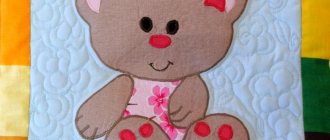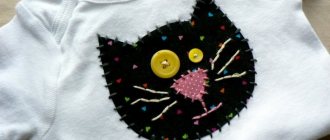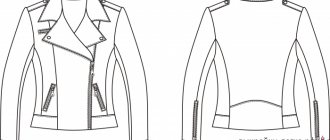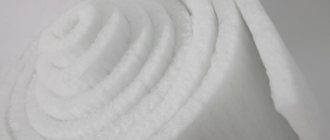How to sew a duvet cover for 1.5 sleeps, 2 sleeps or for children - sizes
Dimensions
Dimensions
Reasons why it is better to sew a duvet cover with your own hands rather than buy it in a store:
- You have a non-standard blanket.
- You find it difficult to choose ready-made duvet covers because you don't like their fasteners or sizes.
- Are you tired of squeezing your blanket into a duvet cover that's too small or too big?
- You want exclusive bedding.
- You want to save some money.
If at least one of these reasons is yours, feel free to start sewing, remembering to measure seven times and cut once. In fact, there is nothing easier than sewing two rectangles and figuring out what the fastener on the duvet cover will be.
Popular methods
To really make the process of making your bed easier, you need to know how to properly place a duvet cover on a duvet. This largely depends on where the hole is located on the duvet cover. Let's consider 3 methods, one for each type of duvet covers: with a hole at the bottom, on the side and in the middle.
How to quickly put on a duvet cover with a hole at the bottom
- To begin, turn the duvet cover inside out and place it with the opening facing away from you;
- Lay the blanket evenly on top and roll everything together into a roll;
- After this, grab one edge of the roll through the hole in the duvet cover and turn it outward. Repeat the same on the other side;
- Now carefully unfold the blanket back. Ready!
This is the fastest way, thanks to which you can cope with refueling in 60 seconds (you just need to practice), and with proper dexterity, the time cost will be no more than half a minute. One person can handle it, but it’s much more convenient to do it together. Details of the process in the video instructions below:
How to quickly put on a duvet cover with a hole in the side
- Turn the duvet cover inside out and pull it over your hands through the side hole so that you grab two opposite corners with your fingers (one from the side of the head, the other from the side of the legs);
- Now grab the corners of the blanket along with the corners of the duvet cover (one from the side of the head, the other from the opposite side);
- Start turning the laundry inside out so that the blanket “climbs” inside;
- Gently straighten the duvet cover and check that the second pair of corners fit correctly without getting tangled.
Expert opinion Maria Vasilievna Mikhailova Manager of a furniture store. Knows everything about comfort and interior design
With a hole in the middle
This type was very popular in Soviet times, but today it can be found in everyday life.
- Press the blanket into an accordion shape and place it right in the middle of the duvet cover;
- First, tuck one side of the garment in, carefully tucking the ends into the corners. Then repeat the same with the other side;
- To be sure that the garment lays flat, shake it a couple of times.
We hope these secrets will help you make your bed faster than you did before. But keep in mind that you may not be able to do it perfectly the first time.
If you constantly stick to the chosen method, then you will get better and better each time, you will develop your own tricks and making your bed will become a pleasure.
How to sew a duvet cover without a pattern?
To sew a duvet cover without a pattern, you just need to know the length and width of your duvet. To avoid disappointment, measure it carefully. To do this, place the blanket on the floor, smooth out the folds, if any, and, without stretching the fabric, measure the length and width of the blanket. The resulting dimensions will be the basis for the duvet cover pattern. To these measurements you need to add seam allowances, and this is approximately 3 cm on each side, or just add 6 cm.
Don't forget that the thickness of the blanket also needs to be taken into account when sewing a duvet cover. So for a thin blanket up to 1 cm, you don’t need to add anything. For a blanket of medium thickness, 2-3 cm. And for a thick blanket, 4-5 cm. To avoid mistakes, apply a ruler to the blanket lying on the floor and visually determine this size.
The width of the fabric for a duvet cover can be different, and when calculating its consumption, you need to rely on the width of the fabric that you are going to buy.
If you use narrow cotton fabric 90-95 cm wide for sewing, then your duvet cover will consist of strips of this fabric the length of your blanket. So, to sew a duvet cover you may need 2-3 stripes.
How to sew a duvet cover from fabric, 95 cm wide
Let's consider the fabric consumption for a children's chintz duvet cover of a standard size with a width of 90 - 95 cm:
If you want to sew a children's duvet cover from a fabric 95 cm wide, then this width will not be enough for one side of the duvet cover, if the blanket is, for example, 110 cm wide and 140 cm long. This means that you will have to buy three lengths, plus seam allowances. In our example, this is 140 multiplied by 3, and add approximately 20 cm of allowance. In total, the fabric consumption will be 4 meters 40 cm.
From leftover fabric you can sew pillowcases for small pillows.
For a duvet cover for a one-and-a-half blanket, with a width of 140 cm, you will need a piece of fabric 95 cm wide and a length equal to the length of the blanket multiplied by 4.
Is 3 lengths enough to sew a one-and-a-half-length blanket?
- A simple calculation shows that if the width of the fabric is 95 cm, then you need to multiply 95 by 3, and we get 285 cm. For seams, if the width of the blanket is 140 cm, only 5 cm will remain. This may be enough if the blanket is thin, or maybe may not be enough if the blanket is thick.
- For a double duvet cover with a width of 172 cm, you will need to buy 4 lengths if you are sewing from fabric 95 cm wide.
- The wider the fabric, the less you will need to buy. If you don’t know how to sew a 1.5-sleeper, 2-sleeper, or children’s duvet cover from fabric 220 cm wide, also rely on the length of your blanket.
Don't forget to take into account seam allowances and allowance for the thickness of the blanket.
Let's consider the fabric consumption for a 220 cm wide chintz duvet cover:
If the length of your blanket is no more than 215 cm, then when sewing a duvet cover from fabric 220 cm wide, it is enough to measure the width of the blanket and buy fabric based on 2 times the width of the blanket plus seam allowances.
Such wide fabrics are created specifically to sew a duvet cover with your own hands, as well as sheets and other bedding. The pattern on such fabrics also takes into account that this is a fabric for bed linen, and it is not located vertically, but horizontally relative to the edge of the fabric.
Wide fabrics to sew a duvet cover with your own hands
List of required tools and materials
Modern beds often have non-standard sizes, so choosing bedding can be very difficult. The optimal solution in this case would be to sew your own underwear using individual patterns.
In addition, many people do not trust purchased linen options at all, preferring to make pillowcases, sheets and duvet covers with their own hands. This allows you to be confident in the quality of tailoring and additionally saves some money.
To sew a duvet cover yourself, you will definitely need the following tools and materials:
- Sewing machine. The main working tool with which to create strong and durable stitches. You just need to select in advance the type of thread that is suitable for the strength and texture of a particular product.
- Textile. The main raw material from which the duvet cover will be made. The choice of fabric depends on personal preferences and financial capabilities. At this stage, it is not recommended to save money, since cheap synthetics can cause allergic reactions on the skin. The best option would be natural fabric such as cotton, calico or silk.
- Iron. Will be used to smooth fabric before work, as well as to seal seams.
- Scissors for cutting fabric and threads.
- Needle for basting. With its help, the user will be able to outline the image of the future product in advance and fix it manually.
- Chalk or soap scraps. Used to construct a duvet cover pattern on fabric.
Pattern diagram for a duvet cover made of fabric 220 cm wide
Bed linen fabrics with a width of 220 cm usually allow you to use fabric more economically and leave less scraps. In addition, they save time on sewing. You don’t have to process one side of the duvet cover, but simply bend the fabric in half at this point.
Pattern diagram for a duvet cover made of fabric 220 cm wide:
How to sew a duvet cover diagram
For a 100cm wide baby blanket you will need a piece of fabric that is the same length as the blanket plus seam allowances.
Let's select available means
The ingenuity of our women is amazing! Judge for yourself. To avoid finding a soft and voluminous lump instead of a bedspread in the middle of the night, they use a variety of available means.
- clothespins;
- safety pins;
- large paper clips;
- crab hairpins.
Whether any of this is worth using and what exactly to use, each woman decides for herself.
Of course, you need to be especially careful when using sharp metal objects when covering a child.
As you can see, there is an opportunity for experimentation in choosing the optimal method. Or maybe you have already found such a way?
How to sew a duvet cover - choosing a fastener
Types of fasteners for duvet covers:
- Duvet cover fastening with buttons.
- Duvet cover zipper.
- Wrap-around closure made of fabric and Velcro.
- Concealed seam closure with concealed zipper.
- “Soviet” fastener in the form of a diamond or square on the top of the duvet cover.
The simplest fastener for a duvet cover with seams is obtained if a section of 30-40 cm in length is left unstitched in one of the seams. The disadvantages of such a fastener can be tears in the fabric when putting it on the blanket. If you insert a zipper into such a seam, there will be no tears in the fabric, and the duvet cover itself will look neat.
Refilling methods
Each type of duvet cover has its own methods for easy threading.
Ease is achieved with frequent training and the use of life hacks:
Standard is a well-known filling method, in which each corner is inserted separately. Suitable for cutting in the middle. To make the mission easier, place a blanket in the center of the slot, making sure the corners of the blanket and duvet cover match. This method is not a favorite among housewives, as the corners fall apart, the blanket gets tangled, the help of another person or clamps is required, which takes a lot of time.
.
“Rhombus” - a method for models with a hole in the center in the form of a diamond or square. First, the duvet cover is laid on the bed, covering it with a blanket. Tuck in two corners from the narrow side, and push the other half of the blanket further into the hole. All that remains is to grab the tucked corners and shake the blanket. It is also possible to have half of the duvet cover turned inside out. In this case, grab the corners and turn them inside out. Next, carry out the procedure as in the previous method.
How to sew a duvet cover - linen seam
When sewing strips of fabric without using an overlocker, use a closed linen stitch.
How to sew a duvet cover:
- Two sheets of fabric are folded with the right side inward.
- In this case, one canvas protrudes beyond the edge of the other by 2 cm.
- Wrap the protruding edge onto another sheet.
- Sew two fabrics together.
- Unfold the sewn fabric.
- The resulting seam is sewn to one of the fabrics.
You can also use the following life hack to make sewing bed linen easier.
- Fold the two strips of fabric together with the wrong sides facing in.
- Sew them with one line approximately 0.8 cm from the edge.
- Unfold the sewn fabric and iron it.
- Fold the fabric with the right side inward and sew the fabrics, stepping back from the edge by about 1 -1.2 cm.
- As a result, you will get a closed linen seam.
How to sew a duvet cover: a useful life hack
Our website has many other important articles about sewing bed linen:
- How to sew a sheet with an elastic band with your own hands?
- Sewing regular and decorative pillowcases.
- Washing bed linen from different types of fabric.
- Colors of bed linen according to Feng Shui, what should the pattern be like so that the life of the owners of the house goes well?
Refilling methods
Each type of duvet cover has its own methods for easy threading.
Ease is achieved with frequent training and the use of life hacks:
Standard is a well-known filling method, in which each corner is inserted separately. Suitable for cutting in the middle. To make the mission easier, place a blanket in the center of the slot, making sure the corners of the blanket and duvet cover match. This method is not a favorite among housewives, as the corners fall apart, the blanket gets tangled, the help of another person or clamps is required, which takes a lot of time.
“Pillowcase” - a blanket is spread on the bed, then the duvet cover is turned inside out. Reaching your hands from the inside to the corners of the duvet cover, grab the corners of the blanket from the narrow side. After this, the blanket is pulled towards itself, the duvet cover is unfolded like a pillowcase on the pillow and shaken. All that remains is to insert the two remaining corners, straighten and shake the blanket.
The method is suitable for seams at the bottom and side of the duvet cover (it will be difficult to seam the side if the duvet is large and heavy).
“Sausage” is an Internet life hack from the “get it done in 60 seconds” category, which surprises with its simplicity, ease and has a little trick. The duvet cover turned inside out is spread on the bed, and a blanket is laid on top. Starting from the side without the hole, roll up the roll. Holding the corners, turn the duvet cover inside out to put it on the resulting sausage, then unroll and shake. The life hack is suitable for a duvet cover model with a slit at the bottom. The mission becomes more difficult if the incision is small.
This life hack will also work for a case with a hole in the middle, but refilling it will be more difficult. Here you need to wrap two “sausages” towards the center and unfold each one one after another
“Rhombus” - a method for models with a hole in the center in the form of a diamond or square. First, the duvet cover is laid on the bed, covering it with a blanket. Tuck in two corners from the narrow side, and push the other half of the blanket further into the hole. All that remains is to grab the tucked corners and shake the blanket. It is also possible to have half of the duvet cover turned inside out. In this case, grab the corners and turn them inside out. Next, carry out the procedure as in the previous method.
You can turn both sides out, putting them on the blanket one by one. In this case, the duvet cover should lie with the hole facing down.
“Sidewalling” is a method in which the blanket is rolled into a tube, with the narrow side considered the beginning. The resulting bundle is threaded into the side hole of the duvet cover. The free corners are combined with the corners of the duvet cover and shaken. If the blanket is heavy, you can help yourself with clothespins or office clips.
Bed linen for dolls
- From elegant chintz we make a pillow comparable to a doll’s crib.
- We sew a beautiful pillowcase, guided by the size of the pillow. To do this, we baste lace to the front side of the sewing along the perimeter of one of the blanks, making two tucks of lace tape in each corner of the pillowcase.
- We attach the second part of the pillowcase to the workpiece.
- Carefully baste both parts and sew on the machine three sides of our pillowcase.
- We put the finished pillowcase on the pillow and use neat stitches to make a secret seam along the entire length of the fourth side. If desired, you can sew a zipper into one of the sides: this will enhance the resemblance to a real pillowcase and make it easier to care for the doll’s linen. In this case, the pillowcase can be easily removed and washed.
- The size of the duvet cover should match the size of the blanket. We sew two blanks, folded with the front side inward, on a machine, not forgetting to leave a small hole at least fifteen centimeters wide.
- Having turned the finished duvet cover inside out, we put it on the doll’s blanket and sew up the hole left with a hidden seam. If the laundry will be washed regularly, you can leave the hole unsewn.











